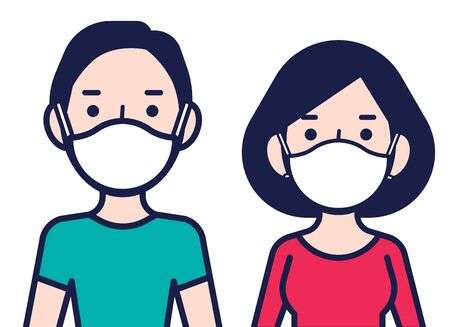Most Homemade Masks Are Good Enough, Says Study

Common household fabrics used in homemade masks are more effective in blocking droplets generated by coughing and sneezing and are considerably protective even as a single layer, scientists have found, reported The New Indian Express (TNIE).
Researchers from the University of Illinois at Urbana-Champaign in the US said speaking, coughing, and sneezing generates larger droplets, about one millimeter in diameter that can carry virus particles, the report added.
Larger droplets pose a problem as they can squeeze through the pores of some fabrics if they have sufficient momentum, and break into smaller droplets, becoming airborne.
The study was published in the journal Extreme Mechanics Letters.
Scientists said the material for a mask must not only be able to block the droplets but also be comfortable and breathable.
“A mask made out of a low-breathability fabric is not only uncomfortable but can also result in leakage as the exhaled air is forced out around contours of a face, defeating the purpose of the mask and providing a false sense of protection,” study co-author Taher Saif was quoted as saying by TNIE.
“Our goal is to show that many common fabrics exploit the trade-off between breathability and efficiency of blocking droplets, both large and small,” he added.
The scientists tested the breathability and droplet-blocking ability of 11 common household fabrics, including new and used garments, quilted cloths, bedsheets and dishcloth material, using a medical mask as a benchmark.
They then characterised the fabrics in terms of their construction, fibre content, weight, thread count, porosity and water-absorption rate, the report added.
Their analyses revealed that droplets leave the inhaler at about 17 metres per second (mps) while those released by speaking, coughing and sneezing have velocities within the range of 10 to 40 (mps).
“We found that all of the fabrics tested are considerably effective at blocking the 100-nanometer particles carried by high-velocity droplets similar to those that may be released by speaking, coughing and sneezing, even as a single layer,” Saif waa quoted as saying.
“With two or three layers, even the more permeable fabrics, such as T-shirt cloth, achieve droplet-blocking efficiency that is similar to that of a medical mask, while still maintaining comparable or better breathability,” he added.
According to the researchers, the new experimental platform may offer a way to test fabrics for their blocking efficiency against the small and larger droplets that are released as people breathe, or cough.

Comments are closed.